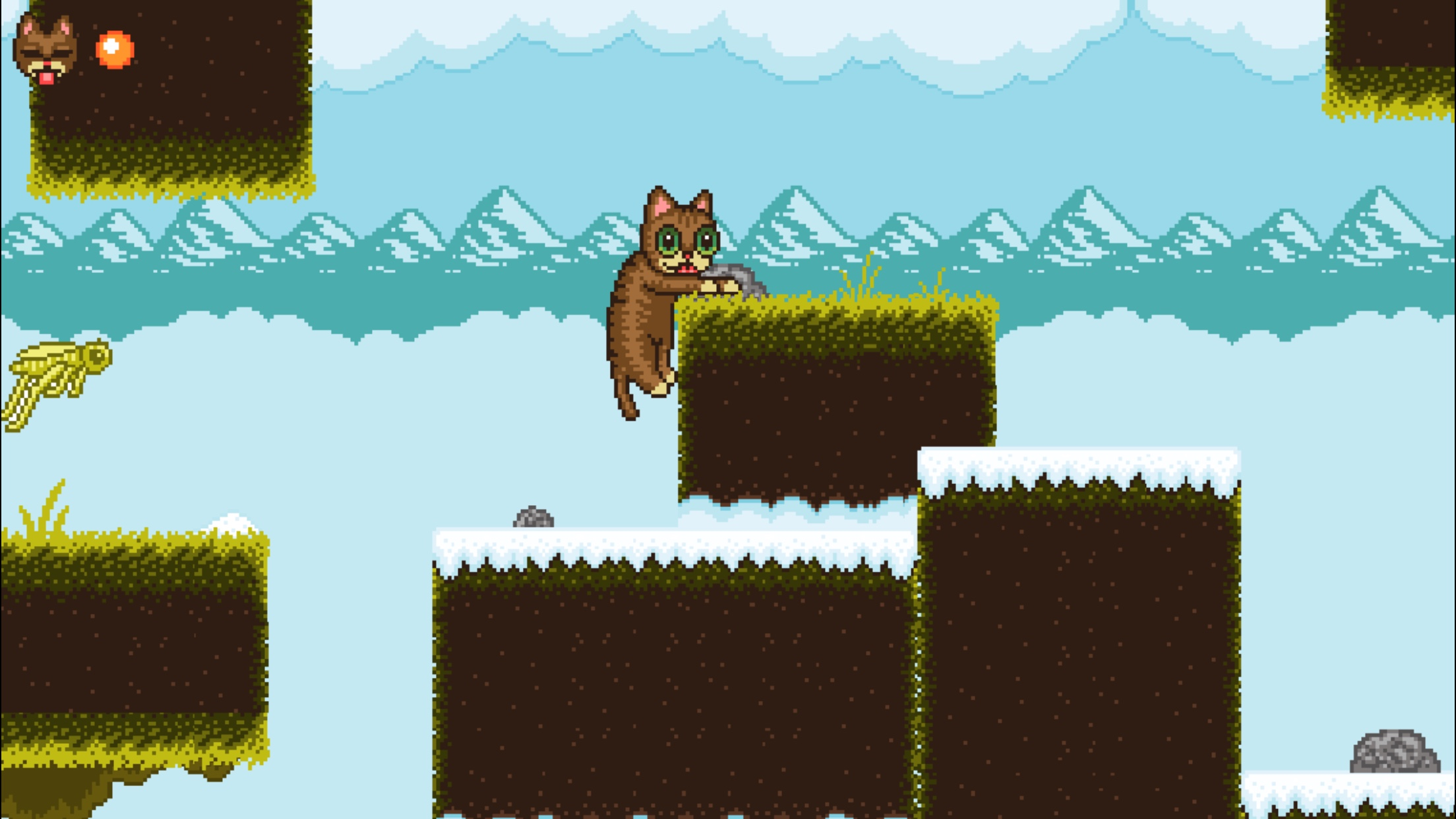Native Web Apps
React, JavaScript and WebAssembly to Rewrite Native Apps
@FlorianRival
I ❤️ apps
Since a long time
open-source, cross-platform game creator designed to be used by everyone

- An editor for games
- Visual programming
- Output HTML5 games









The editor is getting old
- Lots of cross-platforms issues with the UI toolkit, support for macOS and Linux is bad.
- Iterating on the software is slow (C++ 😬)
- Building UI is slow...
- ...and limited to old UI components...
- ...and UX would need some enhancements 😇
- The entry barrier for new contributors is high (C++ 😬)
It's time to react!
Could web technologies help?
React is perfect for making complex UI
Well, really?...
Can we have
list and trees of hundreds of elements,
dynamic panels,
2d/3d visualizations
, nested
dialogs,
color pickers, tabs, file trees, a "real app" feeling
drag'n'drop, search,
2d/3d visualizations
, nested
dialogs,
color pickers, tabs, file trees, a "real app" feeling
drag'n'drop, search,
, copy-
paste things
, handle key-
board shortcuts
, display
and edit code in a rich editor
show charts...
Can we make ambitious apps?
JavaScript is perfect for most applications
Well, really?...
what if we
already have a native codebase?
Or have advanced
simulations/computations,
or need consistent perfs?
GUI (windows, dialogs...)
Filesystem
React.js powered interface
Node.js/browser adapters



X-platform toolkit (wxWidgets)




GDevelop C++ codebase
GDevelop JS codebase
GDevelop C++ codebase
Core classes (game, scene, object, textures...)
Game exporter (JS "transpiler")
libGDevelop.js






Writing WebAssembly
Using Emscripten
git clone https://github.com/emscripten-core/emsdk.git
cd emsdk && ./emsdk install latest && ./emsdk activate latest./emcc tests/hello_world.c
node a.out.jsFor large projects, Emscripten provides replacements that swap GCC or Clang by Emscripten in build system (automake, CMake...)
Expose existing classes
class ObjectsContainer {
Object& InsertObject(const Object& object, size_t position) { ... };
Object& GetObject(const gd::String& name) { ... };
}
class Layout : public ObjectsContainer {
public:
void setName(const gd::String & name_) { name = name_; };
const gd::String & getName() { return name; };
// ...
}interface Layout {
void setName([Const] DOMString name);
[Const, Ref] DOMString getName();
// Inherited from ObjectsContainer
[Ref] Object insertObject([Ref] gdObject object, unsigned long pos);
[Ref] Object getObject([Const] DOMString name);
}"WebIDL" bindings for Emscripten WebIDL binder:
Use Emscripten classes
Module().then(gd => {
const layout = new gd.Layout();
layout.setName("My game level");
const object = new gd.Object();
object.setName("My character");
layout.insertObject(object, 0);
console.log(layout.getName()); // "My game level"
console.log(object.getObject("My character")); // Returns a gd.Object
});- Converted, including JS strings (to char*)
Primitive types?
If I pass an object?
- std::iostream is binded to console.log
- Objects references are converted to pointers (or references) by the webIDL generated glue code
Can I debug?

Things to know
const layout = new gd.Layout();
// ...
gd.destroy(layout); // Binded objects need manual destruction- Memory management requires care!
- For React:
componentDidMount() { this._project = new gd.Project(); }
componentWillUnmount() { gd.destroy(this._project); }or use an Effect Hook 🔥
console.log(layout); // { ptr: 6804120 }Wasm memory
The content of gd.Layout
Things to know (2)
Output files can be large (~3mb for GDevelop), but gzip helps.
Things to know (3)
- A complete test set is invaluable for ensuring that no errors are in the bindings.
abort(16). Build with -s ASSERTIONS=1 for more info.- Wrong type for a parameter
- Parameter forgotten
- Using a deleted object
What can go wrong?
GUI (windows, dialogs...)
Filesystem
React.js powered interface
Node.js/browser adapters



X-platform toolkit (wxWidgets)




GDevelop JS codebase
GDevelop C++ codebase
Core classes (game, scene, object, textures...)
Game exporter (JS "transpiler")
libGDevelop.js















Creating a complex UI?



👉 Find a component library
- Extensive list of high quality components
- Good theming support
- Accessibility
- Documentation quality
Large lists (with drag'n'drop)


👉 Virtualized lists
const SortableObjectRow = SortableElement(props => (
<ObjectRow ... />
));
const ObjectsList = (props) => (
<List
rowRenderer={({ ... }) => {
<SortableObjectRow />
})
/>
);
const SortableObjectsList =
SortableContainer(ObjectsList);
<SortableObjectsList
onSortEnd={({ oldIndex, newIndex }) => ...}
...
/>const ObjectRow = () => <div>...</div>;
const ObjectsList = (props) => props.map(group => <ObjectRow ... />)react-sortable-hoc
react-virtualized
Panels/resizable editors


react-mosaic
👉 Use a tiling window library

Large trees (with drag'n'drop)


👉 Virtualization again!

react-sortable-tree
Levels rendering or visualizations


👉 Forget the DOM




👉 Don't forget the DOM

<svg
onPointerMove={...}
onPointerUp={...}
width={this.props.imageWidth}
height={this.props.imageHeight}
>
<polygon
fill="rgba(255,0,0,0.2)"
stroke="rgba(255,0,0,0.5)"
fileRule="evenodd"
points={vertices.map(vertex =>
`${vertex.getX()},${vertex.getY()}`
).join(' ')}
/>
{vertices.map((vertex, j) => (
<circle
onPointerDown={...}
key={`vertex-${j}`}
fill="rgba(255,0,0,0.75)"
cx={vertex.getX()}
cy={vertex.getY()}
r={5}
/>
))}
</svg>When things aren't fast enough
👉 Profile the rendering
Measure performance in production (React development build is way slower)
shouldComponentUpdate/memoization is often the answer

👉 Inspect calls to WebAssembly
- Beware of overhead in binding code/wasm call when calling functions, in particular if rendering large lists
objects.filter(object => object.getType() !== "") // N wasm calls + string conversion
.map(object => object.getVariables(project)); // N wasm calls + string conversionWon't be noticeable in most UI situations, but can be if used in renderings or long lists/trees
- It might be useful to store strings/values on the JS side if you know they won't change.
When your codebase is growing
👉 Stick to your components
<FlatButton style={{fontSize: 12}}>
Help
</FlatButton><FlatButton>
Help
</FlatButton>😒
☺️
🤩
<HelpButton />Avoid custom/adhoc styles, that won't scale:
Make a component for it! #DesignSystem
👉 Don't unit test your visual components...
Well actually, do, but only for part where there is logic

👉 ...but create visual stories
Storybook
React Styleguidist
👉 Use types
Will tell you that you (or someone else) forgot to pass/remove a prop
Flow
Typescript
Help auto-completion
Avoid most silly (or not so silly) mistakes
Help to "document" your objects
Types shine when you or someone else is refactoring some parts of the app
... all of these which becomes really useful when you're back on some module you (or someone else) wrote a few months ago
GUI (windows, dialogs...)
Filesystem
React.js powered interface
Node.js/browser adapters



X-platform toolkit (wxWidgets)




GDevelop JS codebase
GDevelop C++ codebase
Core classes (game, scene, object, textures...)
Game exporter (JS "transpiler")
libGDevelop.js

Consider your packaging options



GDevelop
Electron
Web app
Embed in a native app
Squoosh.app
Spotify
Steam Chat
👉 Build over Electron APIs
export default class ElectronMenuImplementation {
buildFromTemplate(template) {
this.menuTemplate = template;
return undefined;
}
showMenu(dimensions) {
if (!electron) return;
const { Menu } = electron.remote;
const browserWindow = electron.remote.getCurrentWindow();
this.menu = Menu.buildFromTemplate(this.menuTemplate);
this.menu.popup({
window: browserWindow,
x: Math.round(dimensions.left),
y: Math.round(dimensions.top + dimensions.height),
async: true, // Ensure the UI is not blocked on macOS.
});
}
}class MaterialUIContextMenu extends React.Component { ... }
class ElectronContextMenu extends React.Component { ... }export default class MaterialUIMenuImplementation {
buildFromTemplate(template) {
return template.map((item, id) => {
if (item.type === 'separator') {
return <Divider key={'separator' + id} />;
} else if (item.type === 'checkbox') {
return (
<MenuItem
...
/>
} else {
return (
<MenuItem
...
/>
}
}
showMenu() { ... }
}

GUI (windows, dialogs...)
Filesystem
React.js powered interface
Node.js/browser adapters



X-platform toolkit (wxWidgets)




GDevelop JS codebase
GDevelop C++ codebase
Core classes (game, scene, object, textures...)
Game exporter (JS "transpiler")
libGDevelop.js

Result?

What are users saying?
Wow, what a difference a year can make
but I have to admit, once you worked a bit with it, it could be really more productive on many aspects than GD4
Amazing how much easier and streamlined the engine has become
It works!
The native web app is better than the native app
Ultra fast iterations,
ultra
fast testing (storybook)
, near
perfect cross-platform
, faster
startup time
, auto updates,
more contributors,
"try it
online",
tablets/phones port


Thanks! ☺️
@FlorianRival
gdevelop-app.com
github.com/4ian/GDevelop
Ping me
Check GD
Native Web Apps: React and WebAssembly to Rewrite Native Apps
By Florian Rival
Native Web Apps: React and WebAssembly to Rewrite Native Apps
React, useful modules from the ecosystem and WebAssembly to create ambitious apps. Patterns and tips for create scalable applications at a fast pace.
- 5,189



